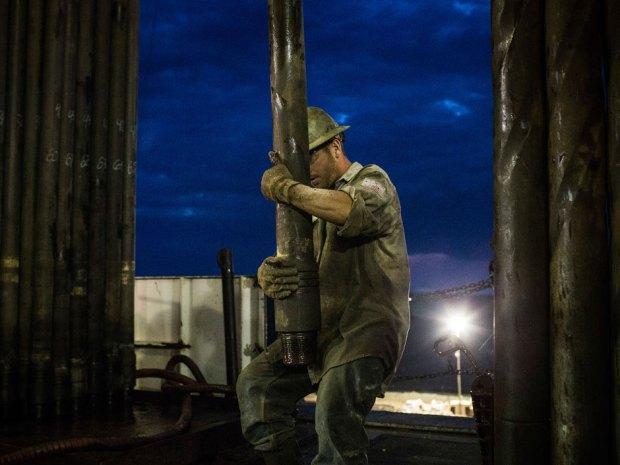
THE LARGEST EOG CUTS 40%

EOG Resources, the largest US shale oil producer, expects its rapid production growth of recent years to come to a halt in 2015, in the starkest sign yet of how weak crude prices are hitting the industry.
The company told analysts on a call on Thursday that it was "intentionally choosing returns over growth".
However, it added that if prices were to rebound to about $65 per barrel next year, up from about $50 presently, it could resume "double-digit" growth next year.
EOG is cutting capital spending by about 40 per cent this year, slowing the development of its reserves to avoid selling too much of its oil during what could be a short-term period of weak prices.
Its plans, which are similar to those of other leading shale producers such as Devon Energy, point to a sharp slowdown in US oil production growth, and possibly falling output, this year.
Noble Energy, another US exploration and production company, said on Thursday it planned to cut its capital spending by 40 per cent this year and expected its US oil production to grow by about 4 per cent on average for 2015 over 2014.
EOG has been one of the biggest success stories of the US shale oil boom, increasing its crude production almost fourfold during 2010-14.
Setting out its plans and reporting its 2014 earnings on Wednesday, however, the company said it expected its US oil production to be in a range of 264,000-293,000 barrels per day this year — about the same as the average of 282,000 barrels per day it reported for 2014.
Jonathan Wolff at Jefferies estimated that by the end of the year, EOG's US production would be running at a rate about 7 per cent lower than at the end of 2014.
That abrupt slowdown contrasts sharply with last year, when its US production grew by 33 per cent. Mr Wolff wrote in a note that EOG had done "exactly the right thing", but that its plans would be a disappointment for its "growth-oriented shareholder base".
The shares opened about 9 per cent lower on Thursday but quickly rebounded. By close of trading in New York, shares were down 2 per cent at $93.80.
EOG is one of the most financially sound of US exploration and production companies, with a return on capital that is significantly higher and debts that are significantly lower than the average for its sector.
Like rivals, however, it is slowing its drilling activity dramatically in response to lower prices.
It will cut the number of rigs it has running this year by half to 27, and will focus on developing its most profitable prospects in its core areas of the Eagle Ford shale and the Delaware Basin, which are both in Texas.
The Bakken shale of North Dakota remains a core area for the company but will be allocated less capital, EOG added, with only 25 wells completed this year compared with 59 last year.
Because its borrowings are relatively low, with net debts of $3.8bn at the end of last year, or just 43 per cent of 2014's underlying earnings before interest, tax, depreciation and amortisation, EOG is not under any imperative to stabilise its finances.
It argues that it is likely to earn better returns by leaving some of its oil in the ground for longer.
Because most of a shale well's total output is generally produced in its first year, short-term prices make a significant difference to well economics.
EOG's latest investor presentation suggests that if oil prices rebound from $45 per barrel to $75, waiting six months to start production from a well would improve its after-tax rate of return by about 25 percentage points.
Its executives said on the investor call that if prices rebounded to $65, it could achieve "very high" returns on capital and cover its spending on wells from its cash flows, making it possible to resume production growth.
ft.com




